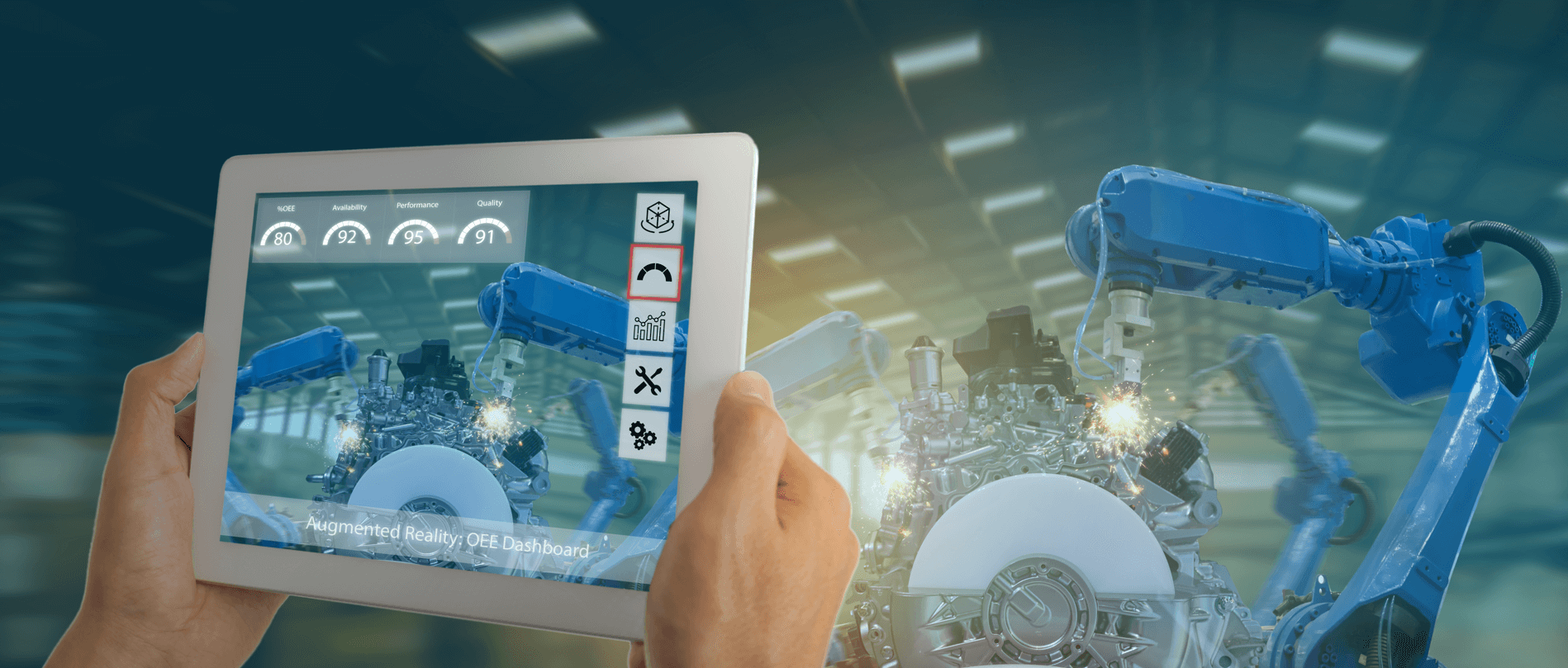
The Internet of Things (IoT): Driving efficiency in Industry 4.0
Contents
- 1. Introduction to the Internet of Things (IoT)
- 2. The impact of IoT in Industry 4.0
- 3. Applications of IoT in the Industrial Sector
- 4. Key Technologies behind Industrial IoT
- 5. Benefits of IoT for Operational Efficiency
- 6. Challenges and Considerations for Implementing IoT
- 7. Case Studies: IoT in Action in Industry
- 8. Future Trends and Developments in Industrial IoT
- 9. Conclusion: IoT as a Strategic Lever for Industry
1. Introduction to the Internet of Things (IoT)
Definition and key concepts
The Internet of Things, or IoT, refers to a network of interconnected physical devices capable of collecting and exchanging data. This revolutionary technology integrates sensors, software and other technologies to enable everyday objects to connect and interact with the digital environment.
History and evolution of IoT
The origins of IoT date back to the first experiments in connecting devices to the Internet in the 1980s and 1990s. Since then, IoT has grown exponentially, driven by increasing internet connectivity, falling costs of sensors and the advancement of information technologies. This evolution has led to increasingly sophisticated and integrated applications in various fields, including industry.
2. The impact of IoT in Industry 4.0
Understanding Industry 4.0
Industry 4.0 represents the fourth industrial revolution, characterized by the integration of digital technologies such as IoT, artificial intelligence , big data, and robotics into manufacturing processes. This revolution aims to make factories more intelligent, automated and interconnected.
Role and importance of IoT in modern industry
IoT is at the heart of Industry 4.0. It enables more accurate and real-time data collection, thereby improving decision-making, operational efficiency, and product customization. Data collected by IoT can help optimize production lines , reduce costs , and improve customer satisfaction.
3. Applications of IoT in the Industrial Sector
Monitoring and predictive maintenance
One of the main benefits of IoT in industry is its ability to predict maintenance needs before equipment breaks down. Through real-time monitoring and data analysis , IoT enables businesses to take a proactive approach to maintenance, reducing downtime, improving OEE (synthetic rate of return) and increasing productivity. lifespan of machines.
Optimization of the production chain
IoT enables an overview of the production chain, identifying bottlenecks and inefficiencies. IoT sensors can monitor working conditions, material flows, and equipment performance, providing valuable information to optimize production processes through predictive analytics in manufacturing management .
Energy and environmental management
IoT plays a crucial role in energy management and the environmental footprint of industries . IoT systems can monitor and control energy consumption, contributing to more efficient use of resources and reducing environmental impact.
4. Key Technologies behind Industrial IoT
Sensors and connected devices
Sensors play a vital role in industrial IoT, collecting critical data such as temperature, pressure, speed, and many other parameters. These connected devices enable real-time data collection and dynamic interaction between machines and management systems.

IoT networks and communications
Connectivity is essential for IoT. Technologies such as Wi-Fi, Bluetooth, 5G, and LPWAN (Low Power Wide Area Network) make it possible to transmit data collected by sensors to central systems for analysis. This connectivity must be reliable, fast and secure to ensure efficient industrial operation.
These platforms collect, analyze and store data from IoT sensors. They play a key role in interpreting data into actionable insights, helping to make strategic decisions and optimize industrial processes.
5. Benefits of IoT for Operational Efficiency
Improved productivity
IoT enables increased automation and better coordination between different parts of a production chain. This leads to a significant increase in productivity and a reduction in human errors.
Reduced costs and waste
Real-time analysis of IoT data helps identify and reduce waste, whether in material resources or production time. By optimizing processes, businesses can significantly reduce operational costs.
Improved safety and quality
IoT contributes to better monitoring of workplace safety conditions and rapid identification of anomalies, thereby improving overall safety. Additionally, product quality can be monitored and controlled more precisely, ensuring consistent compliance with industry standards .
6. Challenges and Considerations for Implementing IoT
Data Security and Privacy
As IoT generates enormous amounts of data, managing the security and privacy of this data is crucial. Businesses must have robust security protocols in place to protect against cyberattacks and data leaks.
Integration with existing systems
Integrating IoT with existing systems can be complex. Businesses need to ensure that new IoT solutions can sync with their current infrastructures, without disrupting operations.
Training and skills required
IoT adoption often requires specific technology and data analysis skills. Companies must invest in training their staff or recruiting specialists to fully exploit the benefits of IoT.
7. Case Studies: IoT in Action in Industry
Successful examples of IoT implementation
This section presents real cases of IoT implementation in different industrial sectors. For example, in the automotive sector, the use of IoT sensors for predictive maintenance has significantly reduced unplanned downtime. In the manufacturing industry, the integration of IoT into production lines has led to a notable improvement in efficiency and product quality.
8. Future Trends and Developments in Industrial IoT
Current and future innovations
The current evolution of industrial IoT is moving towards greater integration of artificial intelligence and machine learning. For example, advanced IoT systems equipped with AI are now capable of performing more complex predictive analysis, thereby improving predictive equipment maintenance. Augmented reality, combined with IoT, is also beginning to transform maintenance and training operations.
Predictions for the future of IoT in industry
The future of IoT in manufacturing looks bright, with forecasts pointing to increased automation and better integration of data into decision-making processes. For example, IoT is expected to play a crucial role in the development of smart logistics , optimizing supply chain management and reducing inefficiencies. Predictive maintenance will become more refined, further reducing downtime and increasing equipment longevity, key aspects for the transition to the next industrial revolution, Industry 5.0 .
9. Conclusion: IoT as a Strategic Lever for Industry
Summary of Key Impacts
IoT has proven its essential role as a strategic lever in various industrial sectors. For example, in the manufacturing industry, IoT integration has led to more agile and personalized production. In agriculture, IoT solutions have enabled more precise management of resources, improving sustainability and efficiency. These impacts highlight the crucial role of IoT in improving operational efficiency, enhancing innovation, and contributing to more sustainable production.
Explore the Best IoT Tools for Industry
For those looking to actually adopt IoT, there are several innovative solutions to consider. For example, IoT management platforms like Siemens MindSphere or PTC ThingWorx offer advanced data collection and analysis capabilities. Smart sensors from Honeywell or Bosch can transform maintenance and monitoring operations. These tools, among others, represent the best of industrial IoT and can be explored in more detail on our platform to meet specific needs for efficiency, innovation, and sustainability.
For those interested in a practical application of IoT, we invite you to consult our selection of the best IoT tools for industry , available on our platform.




